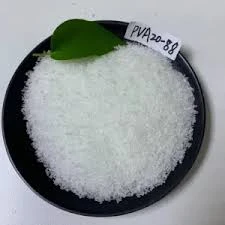The Importance of Choosing the Right Paint for Cement Walls
When it comes to home improvement and interior design, one of the most impactful choices you can make is the color and type of paint you apply to your walls. Cement walls, often used in basements, garages, or modern industrial-style homes, require special consideration when it comes to painting. The right paint can enhance the aesthetic appeal, ensure durability, and protect the underlying material from damage.
Understanding Cement Walls
Cement walls are known for their strength and durability. They provide a solid foundation but can sometimes appear cold, uninviting, or utilitarian. To transform these surfaces into a more appealing and warm part of your home, painting is often the best solution. However, selecting the right type of paint and preparation method is crucial for achieving a lasting effect.
Choosing the Right Paint
When selecting paint for cement walls, there are several factors to consider. One of the essential considerations is moisture resistance. Cement is porous, which means it can absorb moisture from the environment. Therefore, using a paint specifically designed for masonry or cement surfaces is critical. These paints often contain waterproofing agents that can help guard against mold and mildew, ensuring your walls remain intact and looking fresh for years.
Another important aspect to consider is the finish of the paint. There are several options available, including matte, satin, semi-gloss, and gloss finishes. Matte finishes can give a softer, more natural look, while gloss finishes can create a shiny, modern appearance. For areas with a high foot traffic or potential wear and tear, a semi-gloss or gloss finish is often recommended, as it is more durable and easier to clean.
For those looking to add a pop of color to their space, the world of paint colors is virtually limitless. Soft pastels can brighten up a small space, while bolder hues can create a dramatic effect. It’s essential to test colors on a small area first, as the lighting in your room can dramatically change the appearance of the paint once applied.
cement wall paint

Preparing the Surface
Before you start painting, proper preparation is key. This involves cleaning the cement surface to remove any dirt, dust, or grease. If there are cracks or holes, these should be filled and smoothed out with a suitable patching compound. Once the surface is clean and dry, applying a primer designed for masonry can significantly enhance paint adhesion and durability.
Application Techniques
When applying paint to cement walls, using the right tools can make a significant difference. Rollers are generally the most effective for large wall areas, while brushes are excellent for edges and detailed work. If you’re using a spray gun, be sure to cover surrounding areas to prevent overspray.
Multiple coats may be necessary to achieve the desired color depth and richness, especially if you’re covering a darker base or making a significant color change. Allow sufficient drying time between coats, and always follow the manufacturer’s application instructions.
Final Thoughts
Painting cement walls is a rewarding project that can drastically change the ambiance of a space. By carefully selecting the proper paint, preparing the surface adequately, and applying the paint correctly, you can create a vibrant and inviting environment in your home. Whether it’s a cozy basement retreat or a stylish industrial loft, the right paint can enhance the beauty and functionality of your cement walls, making them a feature to showcase rather than conceal.
-
The Application and Significance of Construction RdpNewsMay.19,2025
-
Industrial Grade HpmcNewsMay.19,2025
-
Building Coating Adhesive Building Coating Adhesive HpmcNewsMay.19,2025
-
Application Of Hpmc For Detergent For Detergent In DetergentsNewsMay.19,2025
-
Application Of Hpmc Cellulose In Cement-Based MaterialsNewsMay.19,2025
-
Application Of High Quality Hpmc For Construction In The Field Of ConstructionNewsMay.19,2025




